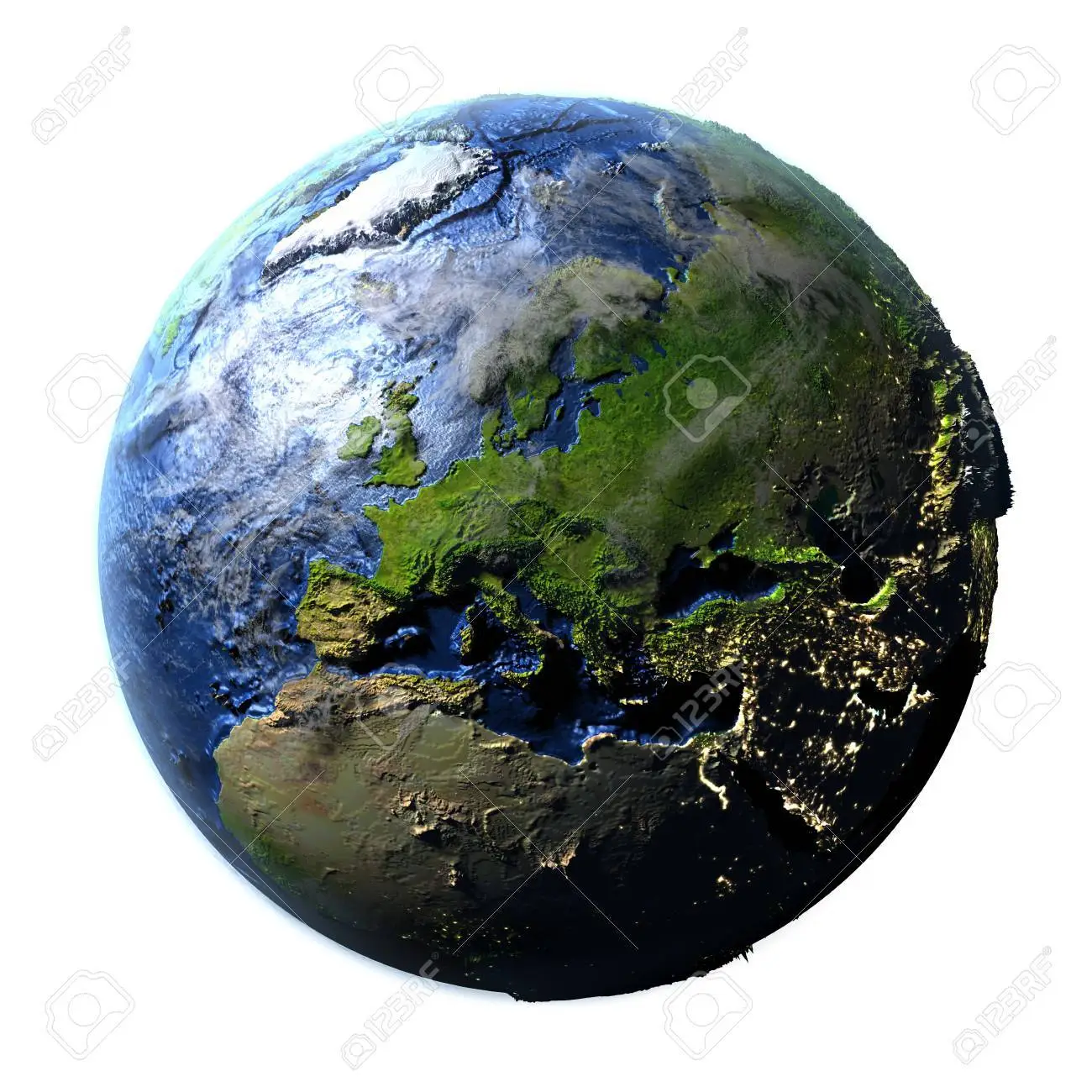The model of the earth project refers to the scientific understanding of the structure and composition of the Earth’s layers. The Earth is composed of several layers, including the crust, mantle, outer core, and inner core.
The crust is the outermost layer of the Earth, and it is the thinnest layer, with an average thickness of about 35 km. It is composed of two types of crust: continental crust and oceanic crust. The continental crust is thicker than the oceanic crust and is primarily composed of granitic rocks, while the oceanic crust is composed of basaltic rocks.
The mantle is the layer of the earth that lies beneath the crust and extends down to a depth of about 2,890 km. It is composed of dense, solid rock, and is divided into two layers: the upper mantle and the lower mantle. The upper mantle is composed of peridotite, a type of rock that contains iron and magnesium, while the lower mantle is composed of a mixture of iron and magnesium silicates.
The outer core is a liquid layer that surrounds the inner core, and it extends to a depth of about 5,155 km. It is composed of molten iron and nickel, and it is responsible for generating the Earth’s magnetic field.
The inner core is the innermost layer of the Earth, and it is a solid sphere with a radius of about 1,220 km. It is composed primarily of iron and nickel, and it is the hottest layer of the Earth, with temperatures reaching up to 5,500°C.
The model of the Earth is based on several lines of evidence, including seismic waves, which reveal information about the Earth’s interior through the analysis of the way in which these waves travel through the Earth’s layers. Other sources of evidence include magnetic data, observations of volcanic eruptions, and the analysis of rocks and minerals.
The model of the Earth provides us with a comprehensive understanding of the structure and composition of our planet. This knowledge is essential for understanding the Earth’s geologic history, as well as for predicting natural disasters such as earthquakes and volcanic eruptions.
The Model of the Earth Project

The Model of the Earth Project is a fascinating exploration into the inner workings of our planet and the celestial bodies that surround it. One of the key elements of this project is understanding the orbit of the Sun, Moon, and Earth.
The Earth’s orbit around the Sun is an elliptical path, taking approximately 365.25 days to complete one revolution. This means that the Earth travels at an average speed of 67,000 miles per hour as it orbits around the Sun.
It’s worth noting that the Earth’s spin on its axis is what causes day and night, and it rotates at a speed of approximately 1,000 miles per hour. Some religious beliefs hold that the Earth will spin faster on the day of judgement, but this is not scientifically supported.
Mitosis is an essential process for living organisms as it allows for cell division and growth. It is the process by which a single cell divides into two identical daughter cells, each with the same number of chromosomes as the original cell. This process is critical for growth and repair in multicellular organisms. In short, mitosis is vital for the survival and reproduction of all living organisms.
The Model of the Earth Project aims to provide a comprehensive understanding of our planet’s geology, climate, and environment, along with the movements and interactions of celestial bodies like the Sun and Moon. By analyzing data from various sources, including satellite imagery and geological samples, scientists can create accurate models of the Earth and its surroundings.
The orbit of the Sun, Moon, and Earth plays a crucial role in shaping the planet’s climate and environment. The Moon’s gravitational pull causes ocean tides, and its presence helps stabilize the Earth’s rotation on its axis. Meanwhile, the Earth’s orbit around the Sun affects the amount and distribution of solar energy received by different regions of the planet, influencing weather patterns, and climate.
Read Also: The Ultimate Guide to Zero Waste Living
It’s important to note that the speed of the Earth’s orbit around the Sun varies slightly over time due to factors such as the gravitational pull of other planets and the Sun’s movement through the Milky Way galaxy. However, the average speed of 67,000 miles per hour remains relatively constant.
As for the importance of mitosis, it is a fundamental process for all living organisms. During mitosis, cells divide and produce identical copies of themselves, allowing for growth and repair of tissues and organs. Without mitosis, organisms would not be able to grow and develop, and would eventually die. Additionally, mitosis is essential for asexual reproduction in some organisms, allowing them to produce offspring without the need for a mate.
Understanding the Orbit of the sun moon and earth, and the process of mitosis, are essential components of the Model of the Earth Project, providing critical insights into our planet’s natural systems and the workings of living organisms.
In addition to the factors mentioned above, the orbit of the Earth also plays a crucial role in the occurrence of seasons. The Earth’s axial tilt causes the Sun’s rays to hit different parts of the planet at varying angles, resulting in the changing seasons. This phenomenon also influences the length of daylight hours and the intensity of the Sun’s radiation received by different parts of the Earth.
Moreover, the Earth’s orbit around the Sun has changed over time, resulting in significant geological and climatic events. For instance, changes in the planet’s orbit and axial tilt have been linked to the onset and end of ice ages, mass extinctions, and volcanic activity. How fast does earth orbit the sun is a common question asked by students in astronomy class.
Regarding mitosis, this process is critical for the maintenance and renewal of tissues and organs in multicellular organisms. Without mitosis, injuries and diseases would be much harder to recover from, and the body would struggle to repair damaged tissues. Additionally, mitosis plays a crucial role in the development and growth of an organism from a single cell to a complex multicellular structure. There is a scientific theory known as the earth spinning faster day judgement.
The Model of the Earth Project is not only crucial for scientific understanding but also for practical applications such as climate modeling, geological hazard assessment, and environmental management. By accurately modeling the Earth and its surroundings, scientists can make predictions about future changes and take steps to mitigate potential impacts.
The study of the Earth’s orbit also helps scientists better understand the formation of the solar system and the dynamics of celestial bodies. By analyzing the orbits of planets, moons, asteroids, and comets, scientists can make predictions about their movements and potential collisions with Earth. This knowledge is crucial for protecting our planet from potential impacts and for understanding the origins of life on Earth.
Furthermore, the study of mitosis has led to the development of cancer treatments and other medical therapies. Cancer is caused by uncontrolled cell division, and understanding how mitosis works has helped scientists develop drugs that can target cancer cells and prevent them from dividing. Mitosis research has also contributed to advancements in regenerative medicine and tissue engineering, with the potential to treat a range of diseases and injuries.
The Model of the Earth Project also highlights the importance of protecting and conserving our planet’s natural systems. By understanding the complex interplay between the Earth, Sun, Moon, and other celestial bodies, we can appreciate the delicate balance of our planet’s systems and the impact of human activities. This knowledge can help inform policies and practices that promote sustainable development, mitigate climate change, and protect biodiversity.
The study of the Earth’s orbit and the process of mitosis are also connected in a surprising way. Mitosis is dependent on the cell cycle, a process that involves a series of checks and balances to ensure the cell divides correctly. These checks and balances are regulated by the body’s internal clock, which is influenced by external factors such as the amount of daylight received.
Read Also: Unlocking the Power of Axle Simple Machines
Thus, changes in the Earth’s orbit and the resulting shifts in the length of daylight can have subtle but significant effects on the body’s regulation of the cell cycle. Can you explain which best describes the importance of mitosis to living organisms?
Moreover, the Model of the Earth Project has practical applications in fields such as agriculture, forestry, and fisheries. By understanding the relationship between the Earth’s orbit, climate, and natural systems, scientists can make predictions about crop yields, forest growth rates, and fish populations. This knowledge can help inform management practices that promote sustainable use of these resources and minimize environmental impacts.
The Model of the Earth Project also underscores the interconnectedness of all living and non-living systems on our planet. Changes in one part of the system can have far-reaching effects on other parts, highlighting the importance of taking a holistic and interdisciplinary approach to understanding and managing the Earth’s natural systems.
The Model of the Earth Project and the study of the Earth’s orbit and the process of mitosis are fascinating and vital areas of scientific inquiry. They have practical applications in fields ranging from climate modeling to medical research and underscore the importance of protecting and conserving our planet’s natural systems.
One fascinating aspect of the Earth’s orbit is the concept of a “supermoon.” A supermoon occurs when the Moon is at its closest point to Earth in its orbit, called perigee. This makes the Moon appear larger and brighter in the sky than usual. Supermoons occur about once a year and can be a spectacular sight to behold.
Another important aspect of the Earth’s orbit is its eccentricity, or the degree to which its path deviates from a perfect circle. The Earth’s orbit is not a perfect circle but instead is an ellipse, with the Sun located at one of the foci. The degree of eccentricity changes over time, with the orbit becoming more circular and then more elliptical over a cycle of about 100,000 years. This affects the amount of solar radiation received by the Earth and can contribute to changes in climate over long periods.
In addition to the importance of mitosis in maintaining and renewing tissues and organs, the process of mitosis also plays a role in genetic diversity. During mitosis, the genetic material in a cell is duplicated and divided between two daughter cells. This process ensures that each daughter cell receives an exact copy of the genetic material. However, mutations can occur during the duplication process, resulting in genetic diversity between the two daughter cells. Over time, this can lead to the evolution of new traits and species.
The Model of the Earth Project and the study of the Earth’s orbit and mitosis highlight the importance of scientific inquiry and discovery. By asking questions, testing hypotheses, and refining our understanding of the natural world, we can unlock new insights and technologies that benefit society and promote a better future for all.
Read Also: Allstate Near Me: Your Local Source for Reliable Insurance Coverage

